
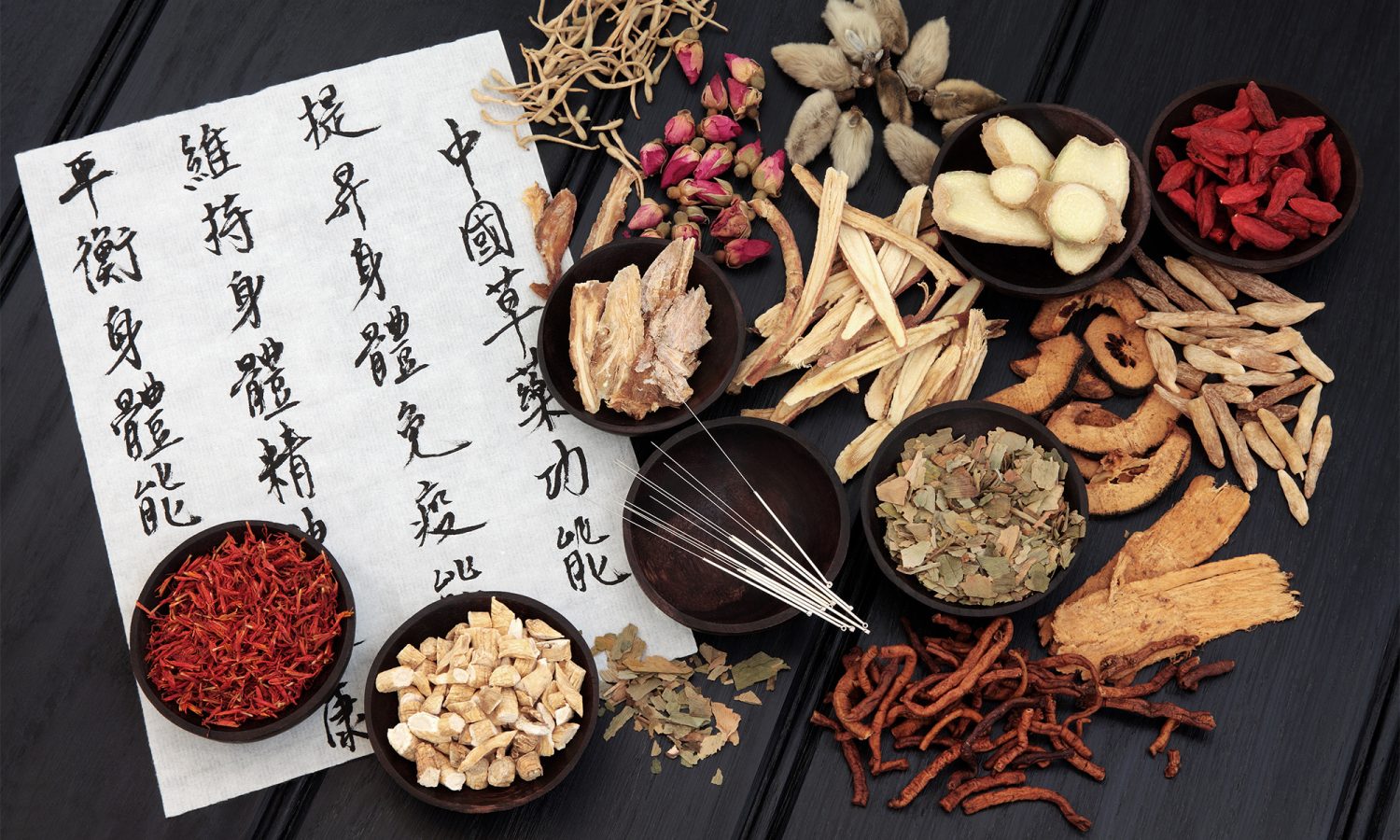
Traditional Chinese Medicine
(photo retrieved from online resource)
Sharing from the perspective of TCM theory,
UTAR Faculty of Medicine and
Health Sciences Department of Chinese Medicine Dr Yap Yau Pin said, “It is
vital for one to replenish their Qi
to prevent flu. Once the body gathers enough
Qi, it no longer needs to be
afraid of the ‘evil’ invasion. Chinese herbal medicines, such as Radix
Astragali (黄耆), Rhizoma Atractylodis Macrocephalae (白朮),
Radix Saposhnikoviae (防风) and red dates, can be used to enhance the
body’s resistance. People who are prone to repeated colds or feel fatigued
and experience shortness of breath lacks
Qi. Thus, they are recommended to
take a medicated diet or tea that can invigorate the
Qi and spleen to enhance the
body’s immunity.”
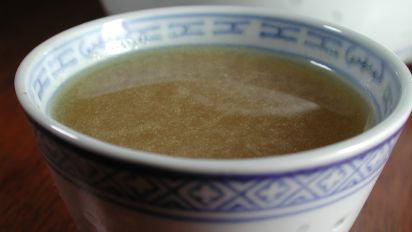
Ginger-Scallion Root Tea
(photo retrieved from online resource)
Ginger-Scallion Root
Tea (葱头薑水) is used to cure colds
and flu. It is largely suitable for people who are experiencing early
symptom of a cold. The best example would be people who have been exposed
to rain. The ingredients are smashed scallion root and one/two slices of
ginger. Soak the ingredients;
boil and serve as tea.
Note: Make sure there is no other symptom like fever or other heat symptoms.
Also, this medicated tea is not suitable for
Yin deficiency constitution (阴虚体质).
Yin-deficiency usually leads to “heatiness”, thus, encouraging the growth of
acne and sore throat. The nature of this tea is rather spicy (属性偏辛), hence some may feel uncomfortable after drinking.
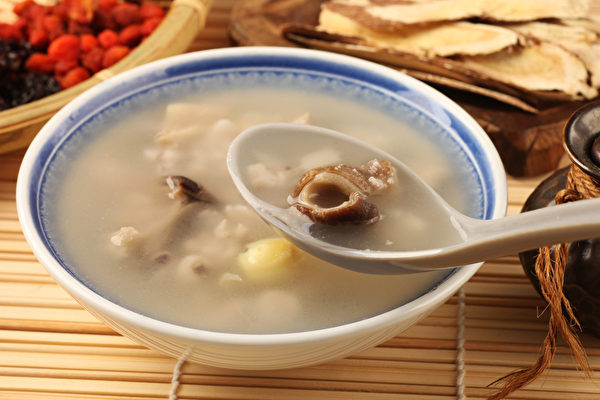
Four Spirits Soup
(photo retrieved from online resource)
Four Spirits Soup or
“Si Shen Tang” (四神汤),
after consuming, provides a spleen-invigorating effect. It also
strengthens one’s resistance against viruses. It is made up of white lotus
seeds (莲子), Chinese yam (山药), Poria (茯苓), Euryale seeds (芡实) and barley (薏仁). It can also be paired with meat optionally.
Cautions: The soup and tea mentioned above may not be suitable for everyone; it
depends on their body constitution. If the body’s immune system is
imbalanced, one would experience immune system disorder which causes one to
fall ill. Patients with immune system disorder usually suffer from
allergies, Lupus Erythematosus (红斑性狼疮) and Ankylosing Spondylitis (僵直性脊椎炎), to name a few. These patients are not allowed to enhance their
immunity. In addition, those who are positive with influenza should avoid
consuming the soup and tea as well.
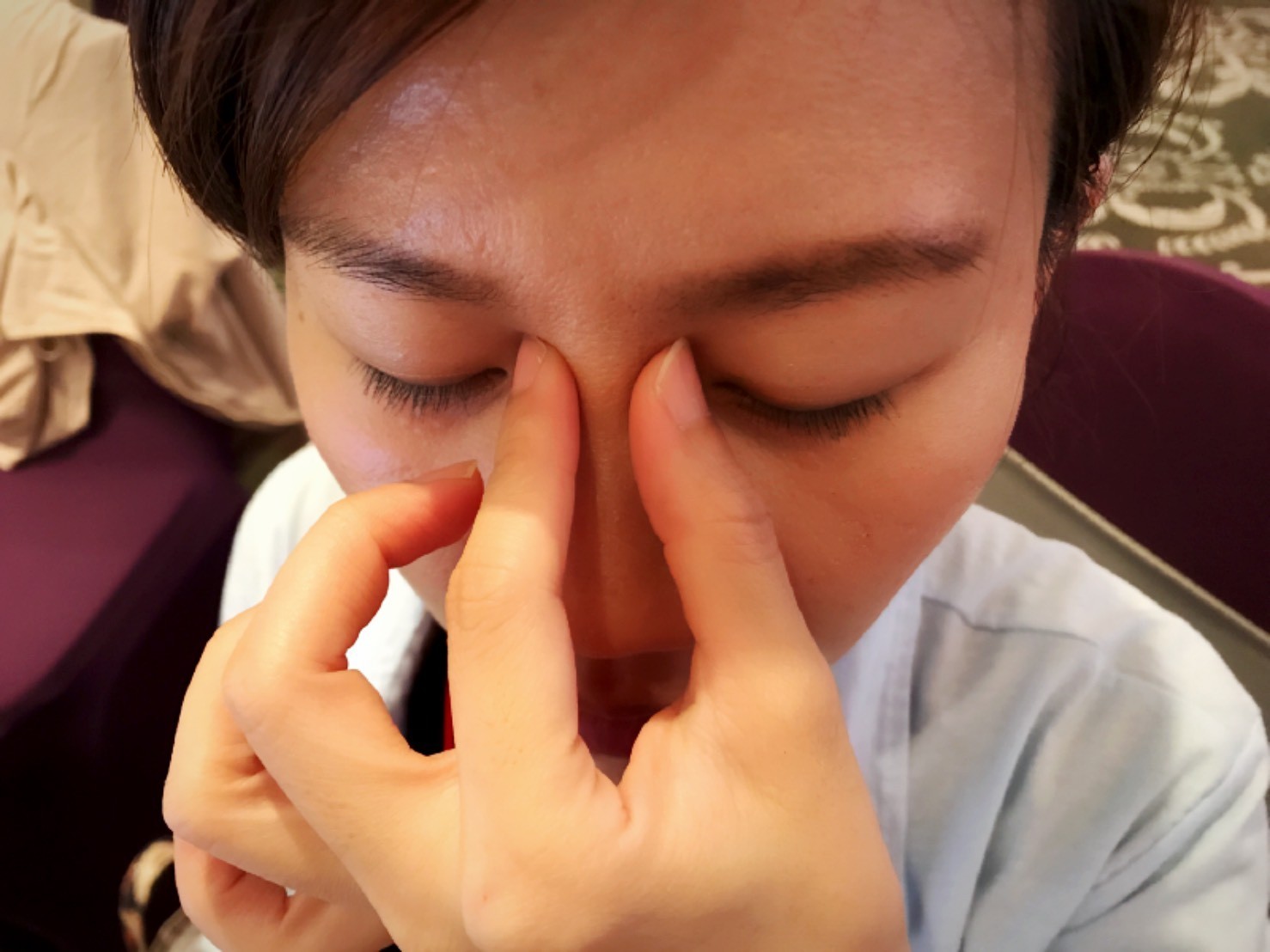
“Nie Sha”
(photo
retrieved from online resource)
Besides consuming medicated teas, there are other healthcare therapies
that can be easily carried out at home, such as massage. This therapy aims
to dispel heat and “Nie Sha” (捏痧). Massaging
one with sesame oil is useful to cure fever. Apply sesame oil on the
forehead, face, chest, and back; rub and massage with your hands repeatedly
for four to five times. Sesame oil can help to get rid of heat from the body
through the skin. This method is especially suitable for children. Whereas
for “Nie Sha” (people who have colds and headache), they may pinch between
their two eyebrows with two fingers; this is to squeeze out the eruptive
toxin. For people who suffer from sore throat, itchy throat or cough, they
can pinch the middle of their neck to relieve the symptoms. Do not pinch the
sides of the neck as you may hurt the aorta (大动脉).
Based on TCM theories, Acupressure
massage is a massage therapy technique which uses finger pressure to
mobilise Qi at acupressure point.
The acupressure massage helps to release blocked or congested energy that
centers in the body, while promoting unobstructed
Qi flow for health and well-being.
The following are some examples of acupressure point shared by Dr Yap to
relieve certain symptoms:
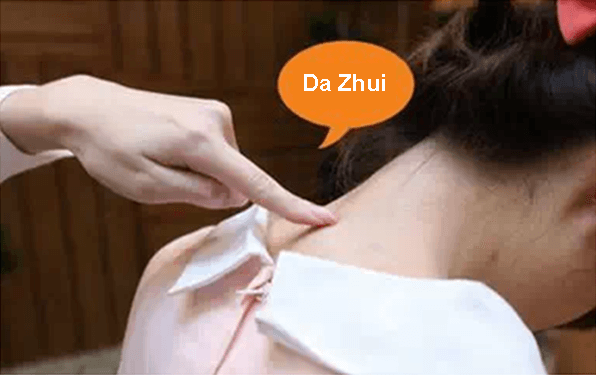
Da Zhui Point
(photo retrieved from online resource)
Da Zhui
Point
(大椎穴) is located at the lower edge of the large bone protruding in the middle,
behind the neck (颈后正中大骨头突起的下缘). Massaging
this point helps to clear heat and relieve fever. It is suitable for people
with a high fever.
Operation: Press the index finger and the
middle finger firmly on the Da Zhui
Point and massage for one or two hundred times.

Feng Chi Point
(photo retrieved from online resource)
Feng Chi Point
(风池穴) is located at the lower edge of the occipital
bone behind the neck, a depression about two fingers wide from the back of
the ear (颈后枕骨下缘,距离耳朵后部约两个手指宽的凹陷处). Massaging this point helps to
relieve the headache caused by flu. It has the function of clearing heat and
dispelling interior and exterior air/gas.
Operation: Hold the head with both hands;
massage the acupuncture points using both thumbs for two minutes.
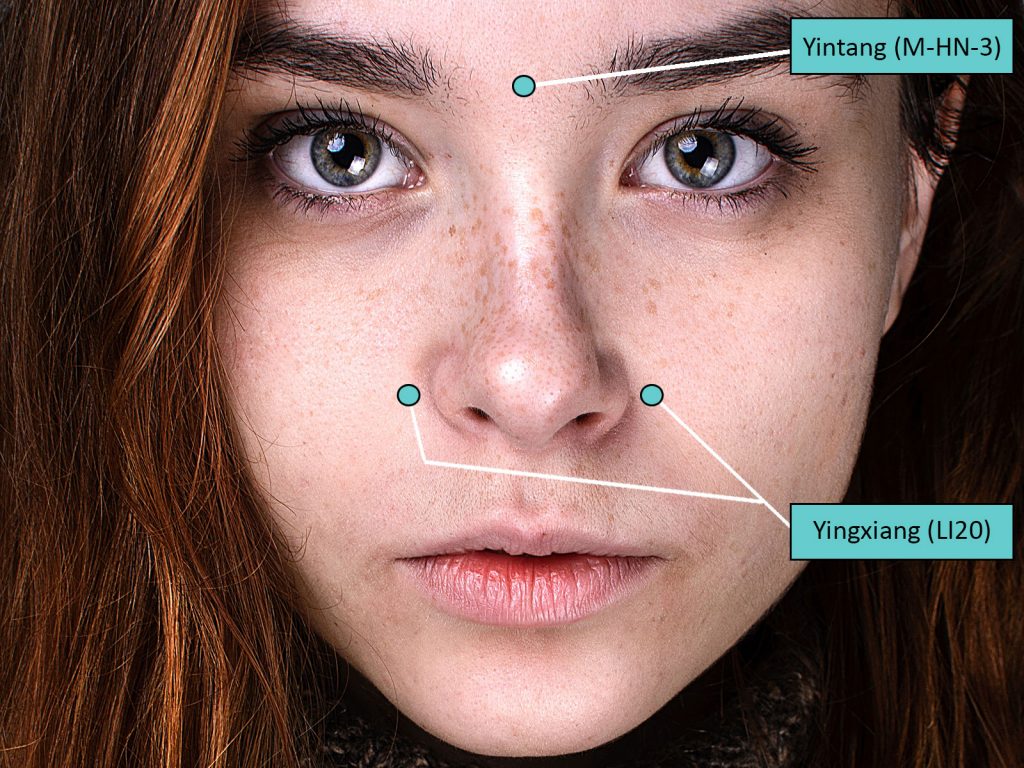
Ying Xiang Point
(photo retrieved from online resource)
Ying Xiang Point (迎香穴) is located
at the midpoint of the lateral part of the nasal wing, in the middle of the
nasolabial fold (鼻翼外缘中点旁,鼻唇沟中间). Massaging this point helps to relieve nasal congestion and runny
nose.
Operation: Use the index fingers of both hands to press the
Ying Xiang Points on both sides of the nose, rub 50 times in both
clockwise and anti-clockwise direction.
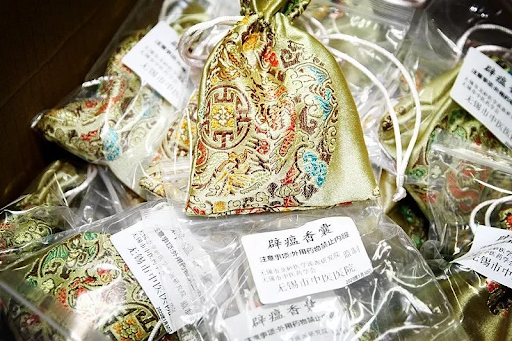
Sachets
(photo retrieved from online resource)
On top of that,
Sachets (香囊) made from Chinese
Herbal Medicines such as Flos Caryophylli (丁香), Radix
Angelicae Dahuricae (白芷), Semen Myristicae (肉豆蔻), Borneolum
Syntheticum (冰片), Lignum Aquilariae Resinatum (沉香), Folium
Artemisia Argyi (艾叶), Herba Eupatorii (佩兰), “Gui Guan” (桂官), Fructus
Foeniculi (小茴香), “Chang Pu Shi” (菖蒲石), “Cang Zhu” (苍朮), Peppermint (薄荷) and Herba Pogostemonis (藿香), can be used
to repel foulness. It serves as aromatics with detoxification properties. It
can be either hung in the car or the house.
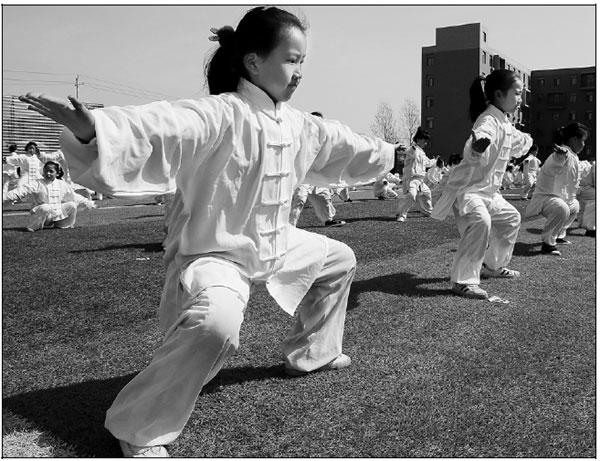
Tai Chi
(photo retrieved from online resource)
One is also recommended to practise Tai Chi (太极拳) for about 30 to 50 minutes a day. Studies have shown that Tai Chi can improve lung capacity and respiratory function. It helps to increase the depth of breathing by ensuring oxygen supply. Chest tightness, shortness of breath and the decrease in blood oxygen saturation are some of the main clinical symptoms of Coronavirus. The discomfort feeling caused by these symptoms may increase the patient's anxiety and despair level. Tai Chi exercises are mainly based on abdominal breathing, which requires deep, long and gentle breathing. Thus, the tension and pressure of chest breathing are transferred to the abdomen. This helps the patient to breathe in more oxygen to enhance their hypoxia symptoms.
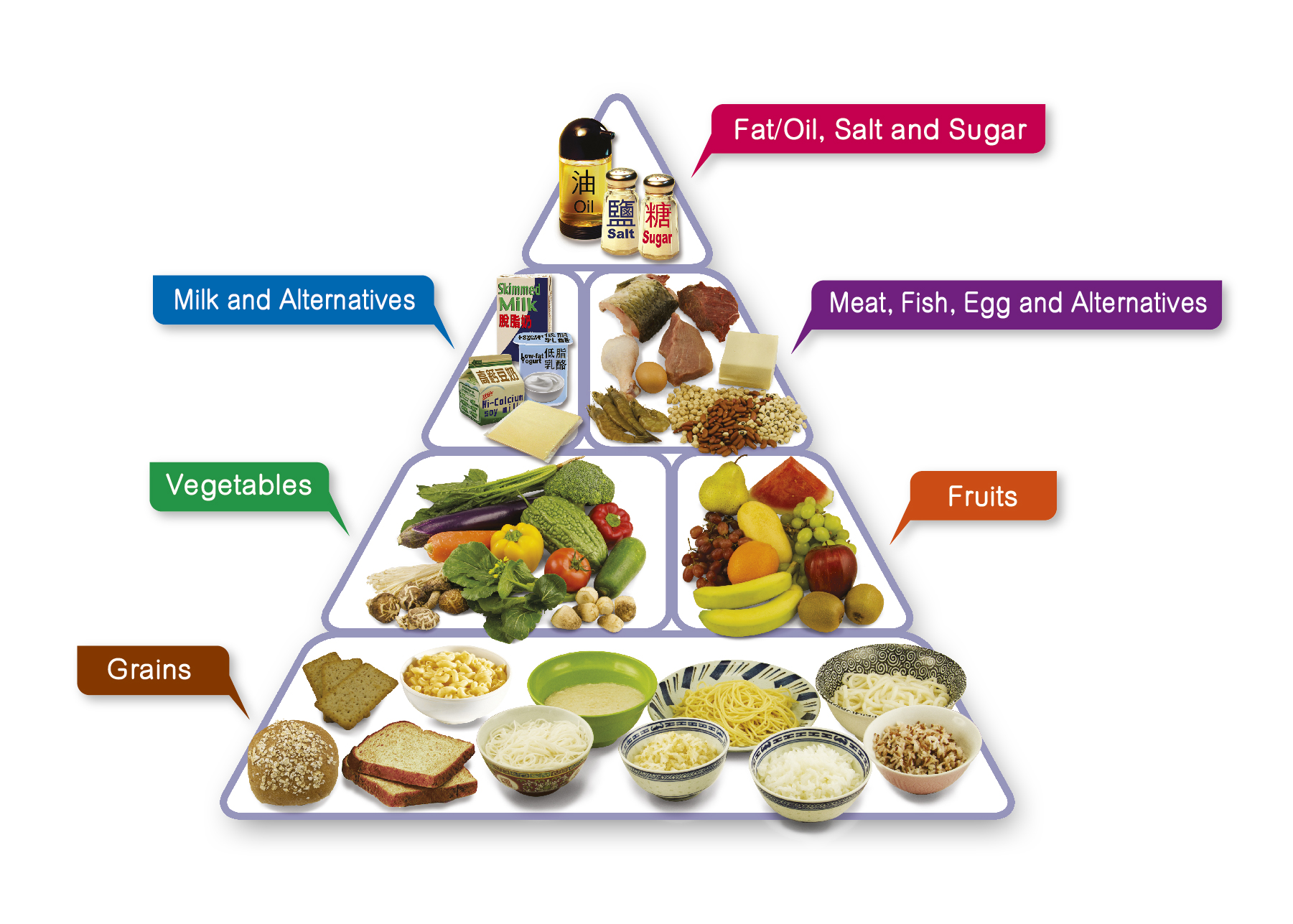
The food pyramid for a balanced diet
(photo retrieved
from online resource)
Generally, it is vital for one to have a
balanced diet to maintain good health and enhance the body’s immunity; foods
must be in variety and water should be consumed every day for hydration and
ease of defecation.
The following are some recommendations to
consider:
- People
who are afraid of cold or have symptom such as cold stomach are recommended
to take ginger (生姜), mustard (芥菜) and
coriander (芫荽).
- People who experience symptoms such as
dry throat and dry mouth are recommended to take green tea (绿茶), Semen Sojae Preparatum (豆豉) and starfruit (杨桃).
- Pear (梨), Bulbus Lilii (百合), groundnut or
peanut (落花生), almond (杏仁), Semen Ginkgo (白果), Fructus Mume
(乌梅), Chinese cabbage (小白菜), tangerine
peel (橘皮) and perilla (紫苏), are
recommended for symptoms such as cough and cough with phlegm.
- For
symptoms such as loss of appetite and bloating, one is recommended to take
Fructus Crataegi (山楂), Chinese yam (山药),
white lablab bean (白扁豆), poria (茯苓), Radix Puerariae (葛根),
Semen Raphani (莱菔子) and
Fructus Amomi (砂仁).
- Honey (蜂蜜), banana (香蕉) and Semen Cannabis (柏子仁) are recommended for symptoms such as constipation.
- Insomnia patients are recommended to take
Semen Ziziphi Spinosae (酸枣仁) and Semen
Platycladi (柏子仁).
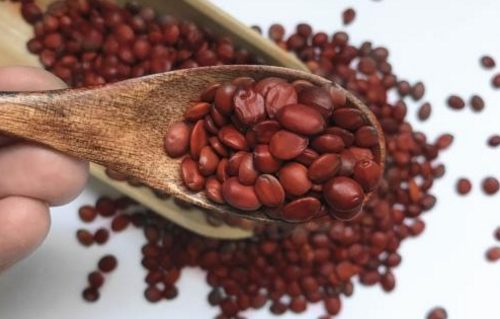
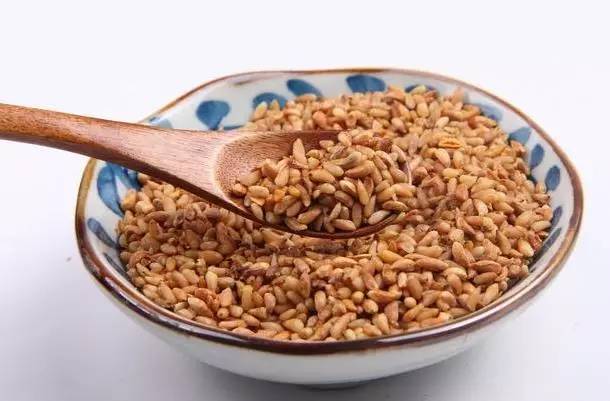
Semen Ziziphi Spinosae (left) and Semen Platycladi are used to cure
insomnia
(Photos retrieved from online resources)
(Translation source:
https://tcmwiki.com/)
![]()
![]()
Wholly owned by UTAR Education Foundation Co. No. 578227-M LEGAL STATEMENT TERM OF USAGE PRIVACY NOTICE